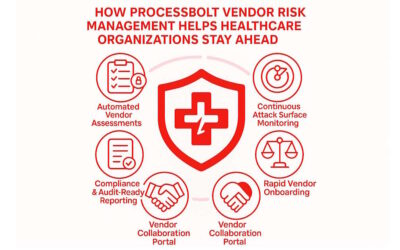Today, building a successful vendor risk management (VRM) strategy goes far beyond sending out spreadsheets or finding a SaaS tool to assess your vendors. According to the law, this step will check the due diligence box, but if you really want to keep your organization safe, a second component is necessary: continuous monitoring.
The key to any successful cybersecurity foundation is understanding how your third-party vendors manage risk. Both your organization and your vendors must agree on an acceptable level of risk, but every assessment you ask your vendors to complete is simply a snapshot in time. The answers they provide today might not apply a quarter, a month or even a week from now. Changes in the supply chain, your vendors’ vendors (also called fourth-party vendors), personnel or policies can put your organization at risk, even with a low-impact assessment rating.
Continuously Monitor Your Vendors
Continuous monitoring is an often overlooked but vital component of your VRM program. Cybersecurity weakens when businesses assume a single vendor risk assessment completed once a year will keep their business safe from hackers. By taking a proactive approach to cybersecurity with continuous monitoring, businesses can flag potential problems immediately, not months or a year from the annual assessment date.
Continuous monitoring helps your VRM program run more efficiently by:
- Tailoring Assessments by Vendor: Whether you use one set of questions for every vendor or tailor the questions to each vendor, vendor assessments are time-consuming and can drain resources, and the results can change within hours of a completed assessment. Continuous monitoring analyzes a vendor’s internet-facing assets—websites, applications and IP addresses—on a 24/7 basis, providing you unparalleled and up-to-date information on any unique changes to your vendors’ environments.
- Automating Alerts to Reduce Risk: When a vendor assessment is complete, how do you know the vendor answered the questions honestly and accurately? Are they really patching regularly? When was the last time they scanned for malware? Through continuous monitoring, answers to these questions and more are provided immediately, not annually, through automated alerts. These alerts can provide vital information that may affect risk assessment ratings and remediation recommendations.
- Providing a Hacker’s View: Ever wonder how a hacker sees your vendors? Are they an easy target to infiltrate with unmonitored portals into your organization? What about the gaps in your own environment? With continuous monitoring, you’ll get a hacker’s view of both your vendors’ internet-facing assets as well as your own.
- Reassessing Based on Security Posture: Most VRM programs assess vendors once per calendar year. Depending on their risk ranking protocol, some organizations may assess medium- to high-risk vendors more frequently but using a calendar cycle puts your organization at risk. Continuous monitoring allows you to reassess based on changes in security posture, not date. Attack surfaces are continually watched for changes or unauthorized activity, which triggers the need for a new vendor assessment.
ThreatScape Continuous Monitoring
ProcessBolt provides ThreatScape as part of an overarching VRM platform that is designed for both vendors and enterprise clients. ThreatScape continuously monitors the attack surfaces that are vulnerable to cybersecurity breaches—for both you and your vendors. ThreatScape cross-checks against aggregated threats, identifies red flags, and monitors for potential risks.
ThreatScape runs continually in the background, without impacting your programs and systems, and immediately alerts you to potential threats that must be addressed. You simply load your internet-facing assets into the dashboard and let it run.
Try ThreatScape free for 30 days when you complete this form and see a demo of the platform.




